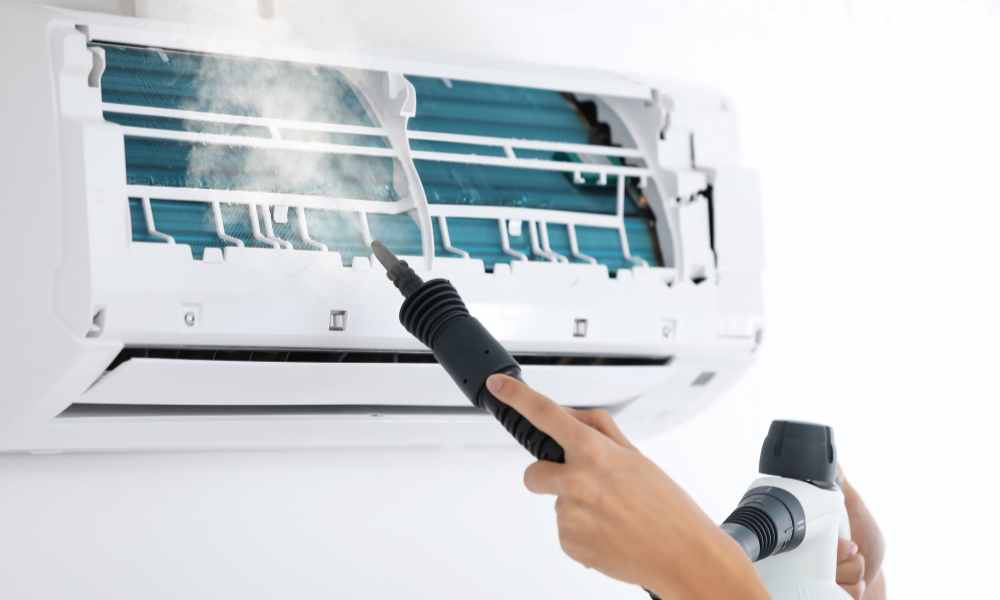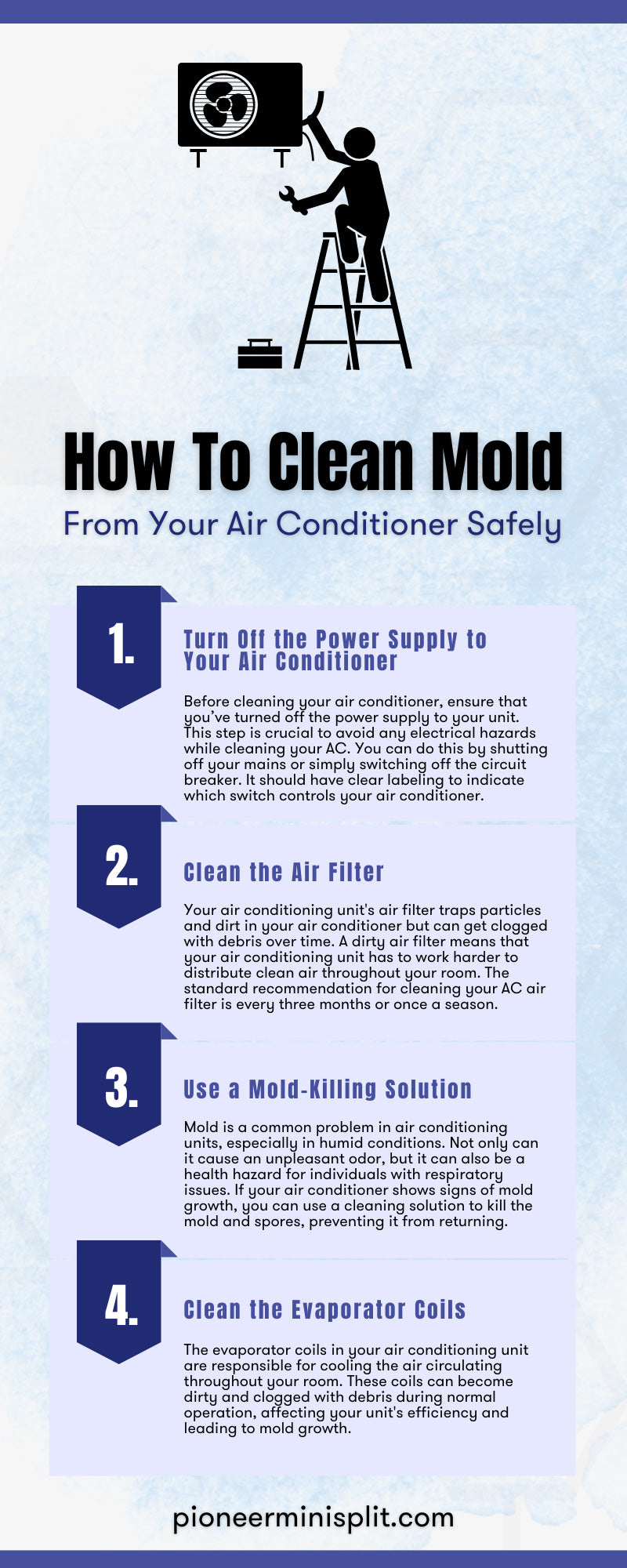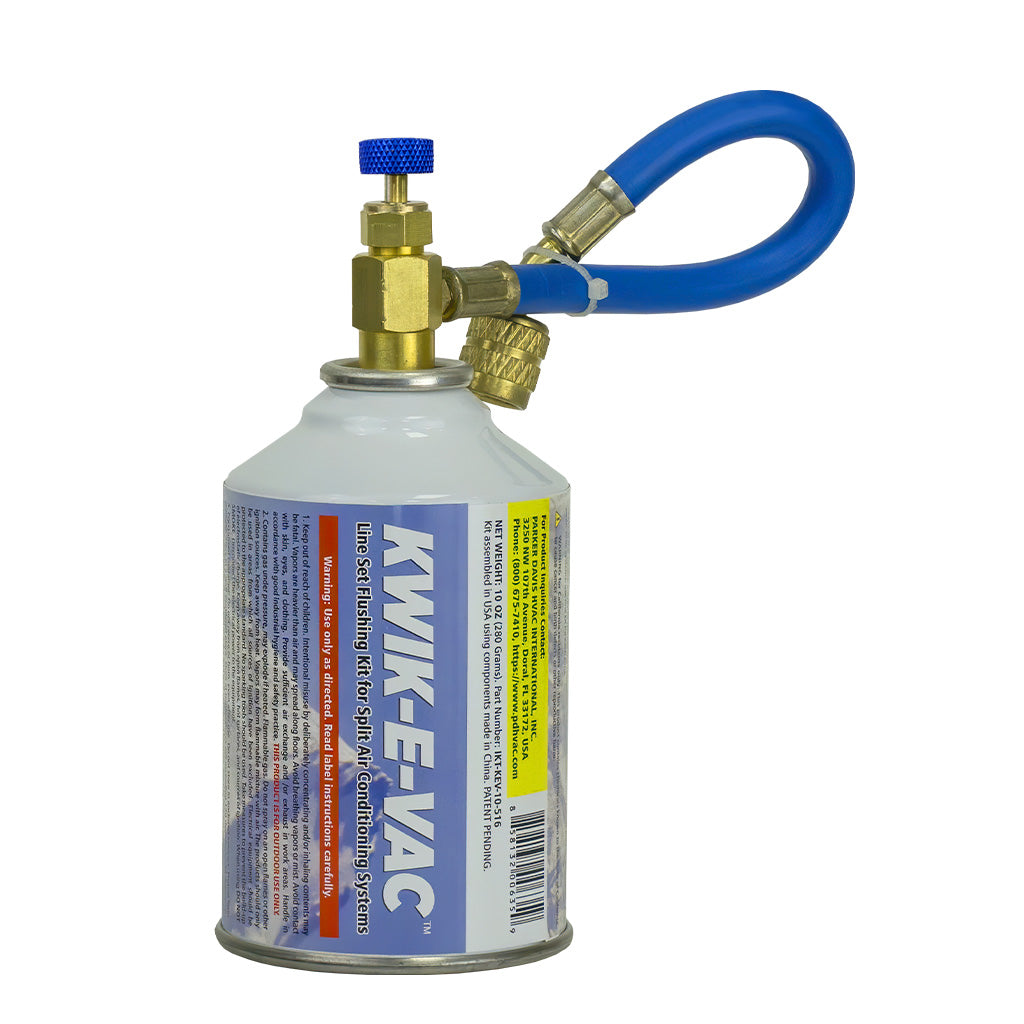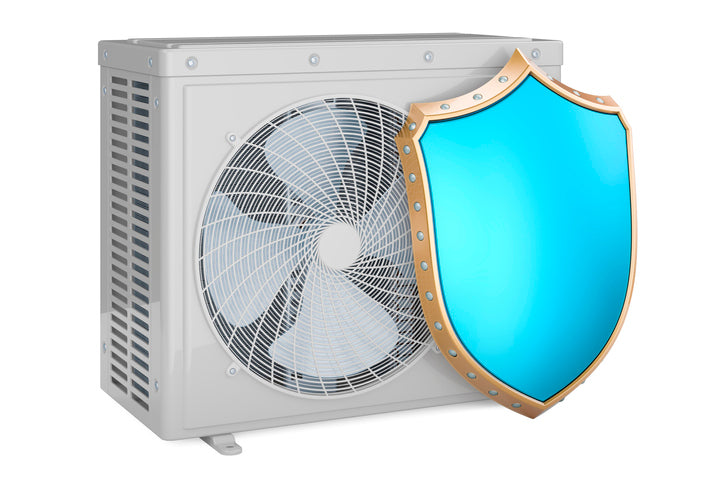How To Clean Mold From Your Air Conditioner Safely

Air conditioning units are a lifesaver in the hot summer months. However, an air conditioning unit can quickly become a breeding ground for mold and bacteria if you're not careful. If left unchecked, these growths can cause a host of respiratory problems and other health issues for you and your loved ones. Here, we'll discuss how to clean mold from your air conditioner safely and ensure that your air conditioning unit is in optimal condition year round.
1. Turn Off the Power Supply to Your Air Conditioner
Before cleaning your air conditioner, ensure that you’ve turned off the power supply to your unit. This step is crucial to avoid any electrical hazards while cleaning your AC. You can do this by shutting off your mains or simply switching off the circuit breaker. It should have clear labeling to indicate which switch controls your air conditioner.
After you've turned off the circuit breaker to your air conditioner, it's essential to turn down the thermostat inside your home. This approach will prevent the air conditioner from turning on while you’re working on it and reduce any accidents. Simply set your thermostat to the "off" position, and the air conditioner should stop running.
2. Clean the Air Filter
Your air conditioning unit's air filter traps particles and dirt in your air conditioner but can get clogged with debris over time. A dirty air filter means that your air conditioning unit has to work harder to distribute clean air throughout your room. The standard recommendation for cleaning your AC air filter is every three months or once a season. However, your filter may need more frequent cleaning if you have pets, smokers, or allergies or live in an area with high pollution levels or pollen.
You may also want to check it visually to see if it looks dirty or clogged. To clean the air filter, remove it from your unit and rinse it with water. If it's hard to clean, soak it in a mix of warm water and detergent, rinse it off, and set it aside to dry. You can remove the filter from its slot by gently pulling it out, but be sure to check your manufacturer's instructions, as some filters may require special cleaning products or replacement.
3. Use a Mold-Killing Solution
Mold is a common problem in air conditioning units, especially in humid conditions. Not only can it cause an unpleasant odor, but it can also be a health hazard for individuals with respiratory issues. If your air conditioner shows signs of mold growth, you can use a cleaning solution to kill the mold and spores, preventing it from returning.
To make your own solution, you can mix equal parts of vinegar and water or use a store-bought solution. Spray the solution onto the moldy surfaces and let it sit for 10 to 15 minutes. Then, wipe down the surfaces with a damp cloth. Once you’ve removed the visible mold growth, it's essential to properly clean your AC unit to prevent mold spores from spreading.
4. Clean the Evaporator Coils
The evaporator coils in your air conditioning unit are responsible for cooling the air circulating throughout your room. These coils can become dirty and clogged with debris during normal operation, affecting your unit's efficiency and leading to mold growth. To keep your evaporator coils in optimal condition, we recommend that you perform a maintenance routine every six months.
First, you'll have to remove the access panel on the evaporator coil compartment and secure the unit with zip ties to prevent the condenser fan blade from turning. To clean the evaporator coils, remove the cover panel and carefully clean them with a soft towel or brush. You can also use a specialized coil cleaner, but be sure to follow the manufacturer's instructions.
5. Hire a Professional Maintenance Service
If you're uncomfortable cleaning your air conditioner or suspect the mold problem is beyond your expertise, consider hiring a professional maintenance service to clean and inspect your unit. A skilled professional can clean and disinfect your air conditioning unit, check the refrigerant levels, and ensure it runs efficiently.
Hiring a professional maintenance service will make it easier to deal with air conditioner mold. Finding an expert with the necessary skills and knowledge to identify the source of mold growth, assess the severity of the problem, and recommend appropriate solutions will make the entire process go more smoothly. They can use specialized equipment and cleaning solutions that remove the existing mold and prevent future growth.
6. Purchase a New Unit
If your air conditioner has lots of mold, it may be time to purchase a new unit. Whether you're a homeowner or a landlord, purchasing a new air conditioning unit requires careful consideration and planning. You'll need to determine your cooling needs by noting the size of the area you want to cool and the number of people who will be using the space.
Calculating the British Thermal Units (BTUs) needed to cool your space will help you determine the appropriate size of your air conditioning unit. You can use an online BTU calculator to make it easier. You should also consider efficiency, maintenance costs, and ease of installation to ensure you get the most out of your investment. HVAC mini-split systems provide a flexible option for those who want to manage individual spaces separately.
Keep Your Air Conditioner in Optimal Condition
A reliable, efficient air conditioning unit is a worthwhile investment that can make your home or property more comfortable, healthier, and more energy-efficient throughout the year. There's no need to be sad if you've noticed mold growths in your unit. It's a common problem that many people must deal with. Taking the time to thoroughly clean and inspect your unit will help you enjoy a comfortable and clean home.
Ensuring your home or property has a reliable air conditioning unit is crucial. If left untreated, mold can affect the air quality in your home and cause various health problems. By following these steps on how to clean mold from your air conditioner safely, you can ensure that your unit is in optimal condition and that your indoor air quality is at its best.









